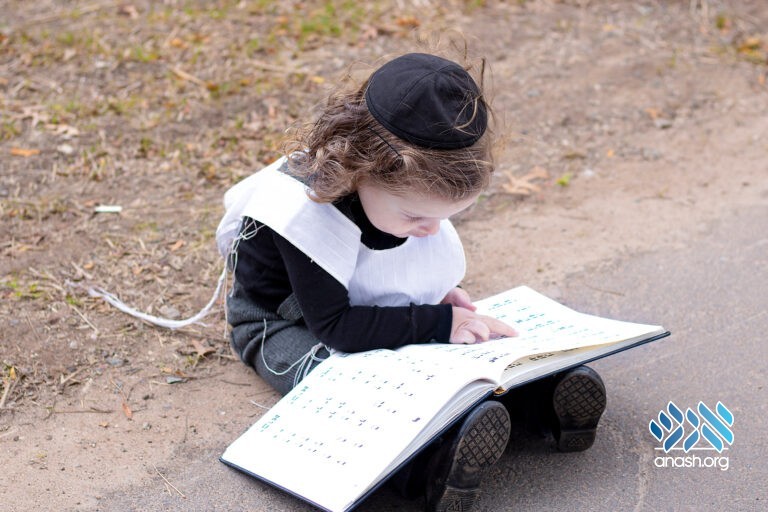Chinuch and the Parsha by Rabbi Shmuel Wagner: The scene in this week’s Parsha is definitely an all-time highlight, as is underscored by the myriad songs written to those words. But why did Yaakov invoke his own name before the names of his illustrious ancestors?
By Rabbi Shmuel Wagner – teacher at ULY Ocean Parkway
No, they were not little children, as erroneously depicted in Parsha arts-and-crafts and coloring books. The younger one was at least 19 years old.
Technicalities aside, that scene in this week’s Parsha is definitely an all-time highlight – as is highlighted by the myriad songs written to those words.
I refer of course to Yaakov’s emotional Bracha bestowed upon his grandchildren, “Hamal’ach Hago’el”.
“V’yikarei Bahem Sh’mi V’sheim Avosai”. As Mefarshim explain, Yaakov is giving them a Bracha that they and their descendants should be worthy of carrying the name and the legacy, the destiny and the dynasty, of the Avos. That the Avos who have toiled and sacrificed to establish their beliefs should find pride and Nachas in the continuity of Am Yisrael through these children.
Did you notice Yaakov’s choice of wording? “Sh’mi V’sheim Avosai”, “My name and that of my fathers”. Would it not be more respectful and proper for Yaakov to have preceded his fathers’ name before his own; “Sheim Avosai U’shmi”?
In the Hayom Yom of Yud-Daled Teves (this Shabbos), we read about the Shpola Zeide’s unique quality of being a man of “intense fervor” (translation from Chabad.org). This occurred from the Ba’al Shem Tov having placed his holy hand on the Shpola Zeide’s heart when the latter was but a lad of three years old. “Since then,” he once explained to the Alter Rebbe, “I am warm!”
The Rebbe then concludes the Hayom Yom with the takeaway message: “The movement of a Tzaddik – certainly seeing or hearing him – must have an effect, never to be forgotten!”
Consider the following analysis: Is there an intrinsic connection between the takeaway message and this specific story of the Shpola Zeide’s encounter with the Baal Shem Tov? Would we not be able to learn this very lesson from any story with a Tzadik? Why did the Rebbe choose to convey the power of a Tzadik’s effect from this particular gesture of the Baal Shem Tov?
If I may suggest, the connection is precise. The ability of a Tzadik, really of any parent and teacher, to impress on the next generation is deeply rooted and dependent on his/her ability to warm. To excite and ignite, as the Baal Shem Tov did to 3-year-old Aryeh Leib.
We all want our children to be enthusiastic about Yiddishkeit. We all Daven to see our children be passionate about holy matters.
We must kindle that enthusiasm. It is up to us to fan that passion.
How?
You cannot sell a child a boat. But if you yourself are going on a boat ride, the child will eagerly join you.
We can impassion our children – by showing a passionate example of Yiddishkeit. We can excite our students – by exuding excitement about Torah, Mitzvos and Chassidishkeit. The Baal Shem Tov warmed the Shpola Zeide’s heart because his hand was holy itself.
Are we celebrating Pesach, Chanukah, Yud Shvat and Hei Teves because of historical events from decades, centuries and millennia ago, or do our children see a live experience? Never mind the drama – it is not (only) about performing a Purim play (although that certainly helps a lot). It is about making Yiddishkeit alive, relevant, important, and practical.
Is Shabbos something we do, or something we live? Is Davening a ritual, or a reality? When our children see us living an inspired life, they will by default be inspired themselves.
Back to Yaakov and his grandchildren, but first, let us appreciate the context:
As the sun sets on Yaakov’s life, the era of the Avos is coming to an end. The clear connection to Hashem experienced by the Chariot of our forefathers is about to be clouded by the dark shadow of Galus. The Shevatim and their children must learn to live the life of a Yid who never breaks, bends, or gives up in the night.
Yaakov is imparting the torch of Yiddishkeit to his grandchildren, and he knows that to do that, the torch must be lit. For the generation of Yidden growing up in “Treife Egypt” to carry the names of their Avos with pride, that name must be alive.
For Menashe and Efraim, Yaakov, their grandfather in the flesh and blood together with whom they have lived 17 years, represents alive Yiddishkeit. Avraham and Yitzchok, about whom they have certainly heard much, but have never seen, represent textbook Yiddishkeit. “My great-great-grandfather was such and such! But I do not know much about him and cannot fully relate to the life he lived”.
Perhaps, this is why Yaakov says “Sh’mi” and only then “V’sheim Avosai”. With that precise order, Yaakov is teaching us the power of a living example. Befitting the theme of a Parsha named “Vayechi”, Yaakov is teaching us the importance of gifting our children a beautiful Yiddishkeit, an authentic Yiddishkeit, one that they can relate to, live with, be excited about, and be proud of, further passing it along to their children, creating living links in the continuous chain of Am Yisrael Chai!

Discussion
We appreciate your feedback. If you have any additional information to contribute to this article, it will be added below.